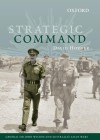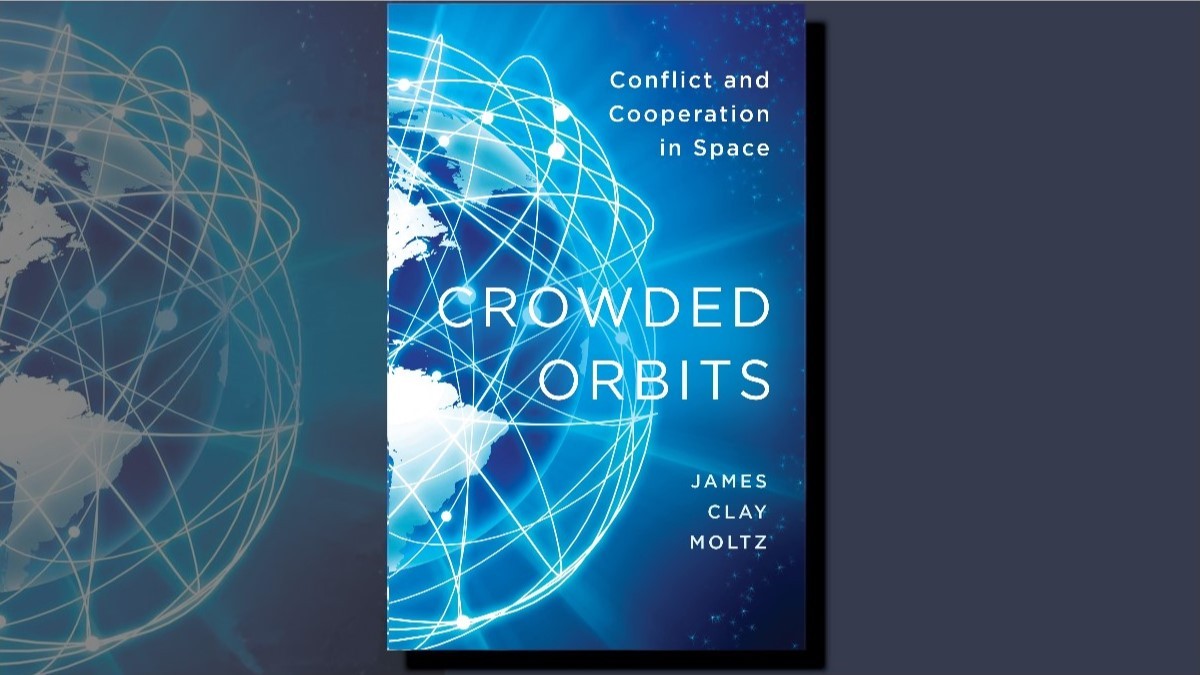Book Review - Strategic Command: General Sir John Wilton and Australia’s Asian Wars
Strategic Command: General Sir John Wilton and Australia’s Asian Wars
Written by: David Horner,
Oxford University Press, Melbourne, 2005
ISBN: 9780195552829, 400 pp.
Reviewed by: Colonel John Blaxland
Professor David Horner is a prolific writer and pre-eminent historian on Australian defence matters, having written a plethora of works that have significantly contributed to the store of corporate knowledge on the Army and the wider Defence organisation. Much of what he has written concerns higher-level command and military affairs, particularly such works as High Command, Defence Supremo and, more recently, Blamey. Horner’s books often bring together the strategic, operational and tactical levels of war to illuminate the complexities involved. In Strategic Command he takes us a step further along this path.
For those already familiar with Horner’s style and rigour, however, another hefty tome on midtwentieth century Australian military affairs may appear intimidating—particularly as General Sir John Wilton was not a man known for his charisma or engaging style. Indeed, he was known as ‘Smiley’ for good reason. With Strategic Command, however, the reader is in for a pleasant surprise, as this is probably Horner’s best and most prescient work. The book is also rich in lessons on planning and conducting operations, on human nature and on the requirement for clear command and control arrangements and the clear enunciation of intent to minimise the risk of misunderstanding that can arise in the ‘fog’ of war. In his introduction, Horner lists compelling reasons for the study of Wilton who was:
arguably the most important and influential Australian Army officer in the second half of the twentieth century. During his tenure as CGS, the Army underwent its largest expansion since the Second World War, and troops were deployed to operations in Borneo and Vietnam. As Chairman of the Chiefs of Staff Committee he set in place joint arrangements that have persisted to this day. When he was promoted to full general in September 1968 he was the first Australian Army officer to reach this rank since Sir Thomas Blamey.
Horner further explains that the value of a biography of Wilton lies in the opportunity it provides to explore some crucial issues in Australian military history. He lists the key issues as: Australia’s relationship with Asia and the development of its strategic and defence policies in the postwar period; the development of the Australian Army; and the challenge of high command.
In addressing these issues Horner sets the scene admirably in chapters one and two which cover Wilton’s early life and his experiences at Duntroon from 1927 to 1930. Chapters three and four describe his life post-graduation when he accepted a commission with the British Army, serving in India and, subsequently, with a mountain battery in Burma. He eventually returned to Australia with the Army’s Staff Corps—a return, writes Horner, due in large part to his desire to be reunited with the love of his life, Helen, with whom he conducted a long-distance courtship over eight years while in India and Burma. Horner makes it clear that she played a remarkable behind-the-scenes role in his life, and the weaving of Helen into the story goes a long way to explain why this book is so enjoyable to read. Horner’s clever interspersing of extracts from Wilton’s letters to his wife reveal a deeply passionate man.
The next few chapters (five to nine) cover Wilton’s wartime experience, commencing with his service as a gunner with the coastal artillery in Sydney before his promotion to Brigade Major Royal Artillery for the Australian 7th Division. In that capacity he performed impressively, planning the artillery support for the Syrian campaign in 1941. On promotion to lieutenant colonel and as GSO1 of the 3rd Division under Major General Stan Savige, Wilton’s role in training the division for jungle warfare was invaluable and his experience with pack mountain artillery in Burma paid dividends. Horner asserts that it was largely owing to Wilton’s drive that mountain guns played an important part in the Wau–Salamaua campaign in 1943.
Similarly instructive during this campaign was the failure of senior commanders to inform Savige (and Wilton) of the higher intent for the assault on Salamaua. Blamey intended the operation as a ‘cloak’ to draw forces away from the main effort intended for Lae, but did not explain this. His failure to do so misled Savige and Wilton as they planned an overzealous prosecution of their three-pronged divisional assault. Indeed, this obsession with secrecy resulted in a loss of trust in the higher commander (Herring) that would irrevocably damage his reputation where his subordinates were concerned.
Wilton’s experience with the American 162nd Regiment—that was tasked to ‘cooperate with’ rather than be controlled by the 3rd Division—in the advance on Salamaua served to highlight the difficulties inherent in loosely worded command and control arrangements. From then on, Horner observes, Wilton endorsed control rather than cooperation which was so dependent on personalities. Wilton was chosen to represent Australia on the Australian Army Staff in Washington DC and subsequently at Advanced Land Headquarters in Morotai as the war’s end approached. This chapter (nine) points to the importance of staff experience and the contribution of good staff work to the well-being of the Army.
In chapter ten Horner presents an interesting reflection on the Chifley Government’s aversion to defence planning alongside Britain and the challenge of planning for realistic contingencies in the face of government dislike of cooperative Commonwealth planning. The confluence of Wilton’s experience in India, Burma, the United States, New Guinea, the Philippines, and, after the war, Indonesia, along with his extensive tour of Malaya, contributed to his becoming a firm believer in the domino theory. His strong views on the need to combat communism in Asia were to shape Australia’s military strategy for the next twenty years. In reading about Wilton’s views today, there are interesting parallels in planning for Middle East operations while remaining actively engaged in South-East Asia.
Wilton was given command of the 28th Commonwealth Brigade in the latter stages of the Korean War and his exposure there, particularly to US Army helicopters, was instrumental in shaping his thinking, as ‘years later he would fight for the Australian Army to have its own helicopters.’ In addition, there were difficulties in rotating only three Regular Army infantry battalions into two battalion positions with the brigade in Korea (with 3 RAR personnel replaced individually for the duration of the war). This, according to Horner, led Wilton to later argue for a larger army, and for a policy of relief by complete units.
After Korea, Horner takes the reader through Wilton’s ‘rounding off’ experiences in the late 1950s. These experiences included Wilton’s time as Commandant at Duntroon (where he pushed for degree status for the College’s courses), as chairman of the Joint Planning Committee of Defence for the South-East Asian Treaty Organisation (SEATO), and as a senior administrative staff officer in the Sydney-based Eastern Command. There Wilton ‘learnt a great deal about peacetime administration (as opposed to administration in the field) and rapidly formed the opinion that many of the procedures were unnecessarily involved and cumbersome and needed streamlining.’ One could argue that these opinions remain relevant today.
Wilton saw the significance of Thailand from his time in the SEATO planning staff, arguing that ‘if you want to hold South-East Asia, you need to hold Thailand.’ It was with this mind-set that he committed himself to his subsequent appointment, from 1960 to 1962, as Chief of the Military Planning Office for SEATO in Bangkok. This chapter (thirteen) provides a fascinating insight into a little-known aspect of Australia’s engagement in South-East Asia and particularly in Thailand. Horner points out that Australia was prepared for military engagement in Laos and was also prepared to commit Australian ground forces to defend Thailand if the need arose—an interesting concept given the recent reappearance of insurgency there.
The Military Plans Office was a joint and multinational staff and Wilton saw the advantages of a joint headquarters over the singleservice focused arrangements then extant in Australia. Indeed, as Horner observes, Wilton’s experience gave him a superb background in the strategic situation in South-East Asia and in operating a joint headquarters. This would stand Australia in good stead in the years to come, particularly as during Wilton’s long tenure as Chief of the General Staff (CGS) and subsequently as Chairman of the Chiefs of Staff Committee he would play a pivotal role in Australia’s Vietnam War. This was a war Wilton firmly believed in, even though he knew Australia could not make a substantial difference to the outcome.
Wilton became CGS when the Army was about to undergo its largest peacetime expansion and most intense operational commitment since the Second World War. It is with this in mind that Horner can confidently assert that ‘few have shaped the operational role of the Australian Army to the extent Wilton did between 1963 and 1966, and few have faced such complex challenges.’ Yet, it is in Wilton’s handling of Australia’s involvement in and gradual withdrawal from Vietnam that there is scope for Horner to have been more critical of Wilton. Horner admittedly describes Wilton as having ‘almost worshipped’ the American commander in Vietnam, General Westmoreland. Yet this fawning approach is not critically discussed and it came despite the now clear flaws in Westmoreland’s obsession with search and destroy missions—missions which came at the expense of the more static local security measures advocated by his British and Australian counterinsurgency advisers and the US Marines.
Once the American decision to commence withdrawal was made, Australia was slow to adapt its strategy and Horner holds Wilton partly to blame for this lag. Wilton’s positivist view of US capabilities came despite his extensive and challenging experience of working alongside US Army units in New Guinea and during the stalemate in Korea. Horner also concedes that Wilton shared a degree of culpability over what war correspondent Dennis Warner called the ‘greatest Australian mistake of the war’—the planting of a long and largely unguarded minefield in Phuoc Tuy province. Wilton could have chosen to, but did not, overturn the decision to proceed with its construction.
Apart from his pivotal role in Australia’s involvement in the Vietnam War, Wilton was a key advocate and driver in fostering the nascent Army Aviation capability. Horner observes that Wilton played a key role in the battle for a separate air arm for the Army, particularly as the Air Force did little to persuade the Army that it was interested in providing the support believed necessary for success in battle. Wilton’s approach to a separate air arm was complemented by a strong belief in the benefits of ‘jointery’ and of a single Department of Defence.
Horner concludes his study of Wilton with the acknowledgement that he is difficult to place in the pantheon of Australian generals for a number of reasons. First, Wilton was a professional soldier, whereas earlier famous generals were citizen soldiers, admirable for their ability to rise to the occasion. Yet as the Government’s requirement for professional forces available for short-notice deployments has increased, the need for professionalism has become paramount and this should be acknowledged with respect to any judgement of Wilton. Second, Australia’s commitment to Vietnam was controversial and Wilton was seen as partly responsible for this controversy. Yet, unlike in the United States, the Australian Army’s ethos was preserved through the experience and some credit should be given to Wilton for this result. Third, as the nature of war and of Australia’s commitments has changed, the capacity for commanders publicly to demonstrate military prowess has diminished. Deciding the shape of Australia’s involvement in Vietnam required as much fine judgement as the nature of our commitment to the First World War. Sir John Wilton met this challenge for eight years during the tumultuous decade of the 1960s.
Strategic Command is a timely and significant work that should be read widely. It is an enjoyable and engaging account of a key player in Australia’s military experience, an account which has significant relevance for today.




